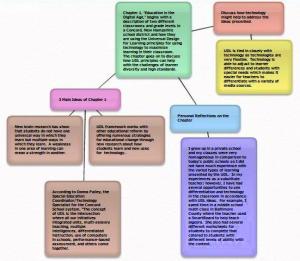I’ll be completely honest… prior to taking this course, I had pretty much made my mind up that it would be a waste of time. I consider myself to be a pretty tech-savvy person and my previous experiences with ISTC and COSC courses at Towson were less than useful. Those classes consisted of teaching students how to use library resources and Microsoft Office applications which were things that I was already well versed in.
I am pleased to say that I was completely wrong about this course. While there were a few technologies that I had heard of, most of them were things that were unknown to me or that I had never tried before. I loved learning about the Web 2.0 tools and researching more of them myself. I can see myself using so many of them in my classroom and also for my own personal use. Not only are there tools for teaching, but there are also tools to help teachers manage classroom assignments, grade-books, and other essential classroom tasks. I also loved learning how to make a digital story. This is another technology that I can see myself using often in my classroom, especially to introduce books and literary periods. Another idea that I loved in this class was the idea of having a classroom blog and teacher’s bookmarking pages. Students always struggle with remembering all of their assignments and constantly have questions about homework or studying for tests. A classroom blog is a GREAT way for students to stay connected to each other and the teacher even when they are not in the classroom.
In addition to these things that I have learned, I would love to learn more about ways to utilize technologies in my classroom. I am especially interested in Web 2.0 tools and since there are new tools being introduced everyday, I am sure that I will have plenty of opportunities to find more of these useful tools. Web 2.0 tools are a great way to get students interested in learning in a way that they might not otherwise be without them. For example; would a student be more likely to complete a poster for a book report using posterboard, glue, and markers or using Glogster? I think that most students would prefer Glogster. Another technology that I would be really interested in learning about is the Smartboard. I know that the chances of my classroom having a Smartboard are pretty slim to none, but it still would be nice to know how to use them since there is a chance that I might have one eventually.
In addition to introducing me to new technologies, this class has changed my perceptions about technology integration in the classroom as a whole. Prior to taking this class, my experiences with technology in the classroom had been minimal at best. Teachers would do PowerPoint presentations or show movies and that was pretty much it. I have since discovered that there is so much more to technology integration. Rather than simply showing students something, students can do things with technology to help facilitate their learning. In a constructivist classroom, technology can play a huge part. Students can have the world at their fingers which is something I had never really realized prior to this class.
I am so glad that I was wrong about this class and maintained an open mind. I cannot wait to use some of the things that I have learned in this course in my own classroom and am excited to learn more in the future.

